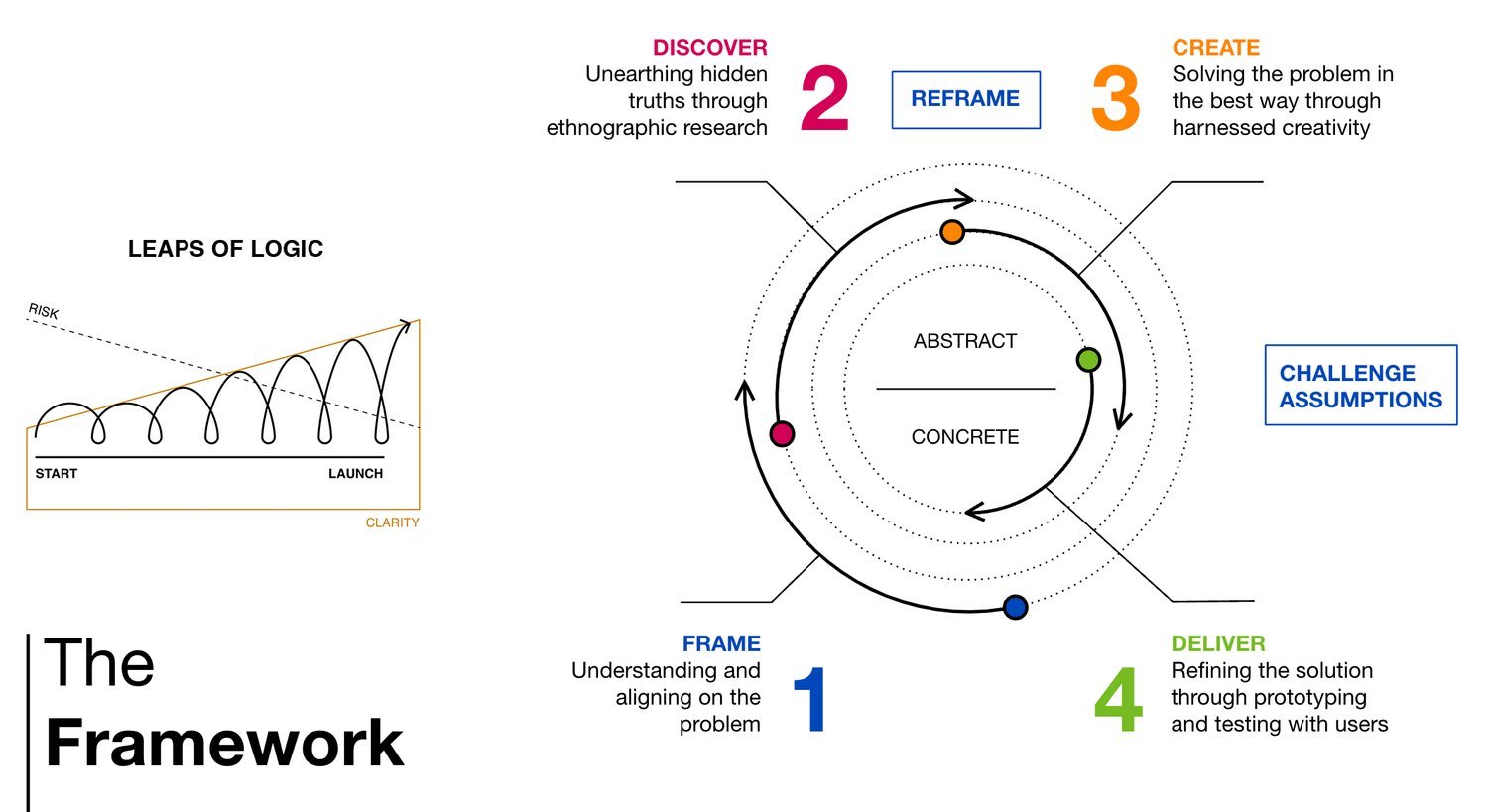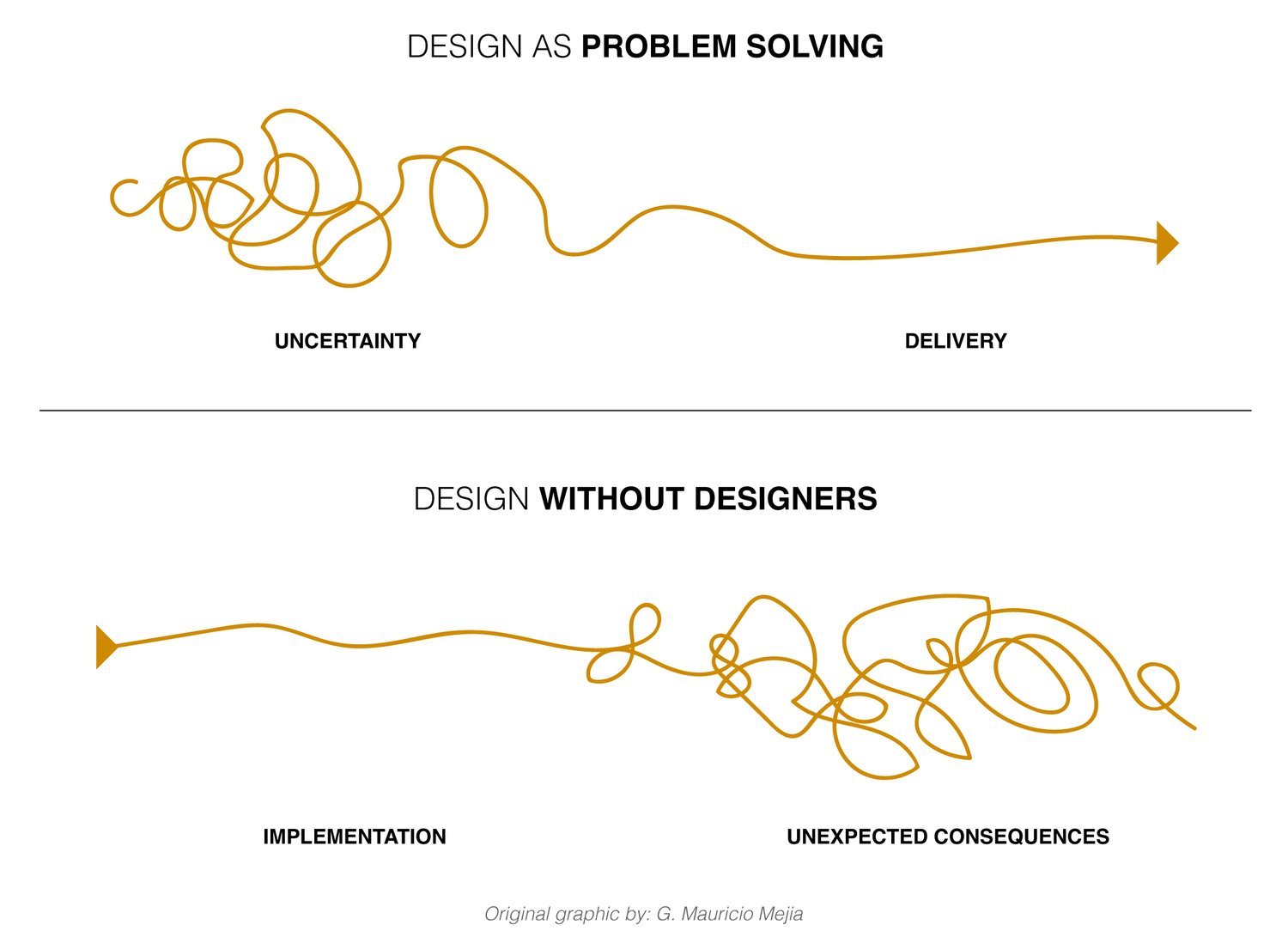Misconception: Ideas are easy. Implementation is hard.
Key Insights
Implementation is hard if ideas are taken easy.
Companies often underestimate their ability to create or acquire new idea and overestimate their ability to implement them.
There is a difference between an idea and a thought. A singular thought that seems good, but unfounded through investigation, does not make an idea.
We need to validate our ideas before we try to implement them.
The HCD process known as Leaps of Logic, is a process to validate ideas against customer desirability, whilst also determining a solution’s viability and feasibility; reducing risk, eliminating unfounded assumptions, and simplifying implementation
An experienced innovation team (internal or external) is needed to make your innovation program sustainable
How do you innovate well, when you are focused on the wrong stage of the process?
The last time I talked about the timing of a company’s innovation program, I argued that leaders shouldn't be faced with a dilemma around whether or not it’s required. They need to just start doing it. This position created some interesting conversations, and I was reminded by a leader in my network about a quote from Guy Kawasaki, saying that "Ideas are easy. Implementation is hard", and mentioned to me that most leaders struggle with implementation. While I agree with this leader's perception, I don't think that Kawasaki's quote reflects reality. In fact, what if it is actually the opposite that is true? I am here to argue that implementation is actually the easy part.
Lower your assumptions
My colleague Jon Campbell from Continuum and I found that established companies often underestimate their ability to create or acquire new ideas and overestimate their ability to implement them. Regularly I see leaders jump too quickly into a solution-mode not based on well-founded ideas. Instead, forward progress is founded on a 'leap of faith' that non-validated assumptions will work well, leaving organisations to strive headlong into the implementation of what was thought, incorrectly, to be a great idea. The implementation then becomes hard and blame is incorrectly attributed.
But what is the alternative? There seems to be a lot of talk about innovation, but not many guides on how to innovate effectively. This creates the perfect breeding ground for lots of buzzwords but little meaningful action. Whilst I agree that every organisation is different in many aspects, every leader can follow an approach known as “Leaps of Logic” and find a much more risk-averse way to increase clarity around idea implementation by reducing the number of assumptions. When it comes to the implementation of ideas - let me explain a few leaps worth considering.
What is innovation?
A better question - what is an idea? There appears to be confusion around what constitutes an idea. People often classify a thought as an idea, which creates a problem for implementation. A thought is someone's opinion. An idea is an actionable insight that can be explained by how it makes value.
Many years ago, we ran an internal crowdsourcing campaign to find great ideas to improve customer engagement with their superannuation. One of the winning ideas was creating a Facebook page for superannuation (Facebook was emerging at that time).I went to talk to the idea owner to ask how it would work. Outside of acknowledging coming up with the idea, it turned out she hadn’t thought through any other details. Imagine what would happen with implementation if we started building a Facebook page based on that thought (not idea), at that time. The learning here is that an idea should be able to be explained, the reasons and how it might work examined, as part of a forward leap of logic. A singular thought that seems good, but unfounded through investigation, does not make an idea.
How to bring ideas to reality?
After practising several approaches to delivering ideas into reality, I found that Human Centred Design (HCD) is the most effective discipline in applying the Leaps of Logic approach. While there are many frameworks to leverage HCD, I prefer driving leaps of logic through four phases. Let me explain it briefly.
FRAME - Start with framing the problem in a situation that you are familiar with; you know it, you’ve seen it happen. This is best done initially, as we want to exploit our accumulated expertise and apply it to the end-user perspective. We must keep our framing abstract enough to capture our imagination but narrow enough to understand the impact. Framing the problem helps to align the entire organisation around a common understanding. Don't spend too much time on it, as long as there is an agreement to test the framing with people affected by that problem.
DISCOVER - We want to learn why things happen the way they do, and what other possibilities are out there. Using empathy to observe and understand our users, we can form insights critical to understanding if we are focused on the right problem and use it as a base to develop future opportunity areas. Creative thinking helps to interpret patterns between what we have learnt about specific user groups and explore previously unconsidered scenarios.
CREATE - Getting stakeholders in a room to ideate without insights and opportunity areas is like deciding to drive a car without petrol - you won’t go far. Spending time in the Discovery phase is essential for this third step to be impactful. It is in this phase that inspiration moments will come. As the name suggests - be creative! Generate as many ideas as possible. Refine them through prioritisation so that we can explain how they will work, individually or together, in the form of a concept.
DELIVER - In this final stage, we are moving from abstract into concrete thinking by building a prototype of our idea. But it needs testing. We need to observe what people do (not what they say they would do) by giving them a chance to engage with it. We iterate the prototype as many times as necessary for it to provide us with enough certainty that we are focusing on the right problem. We then transition our prototype into a Minimum Viable Product.
Customer case first, business case after
More and more companies are declaring that they want to be a customer-centric business (I'm not sure who they sell the business to before that). But these same companies, even when they have customer focussed initiatives, are still saying, “let's build the business case to see if the numbers will stack up”. It creates the perception that they want to see what's in it for themselves first, and not for a customer. To counteract this, I introduced the concept of the “Customer Case”, which demonstrates customer desirability for any idea we want to introduce, and confirms whether we are focused on the right problem. Customer desirability is what we learn and validate through the Frame, Discover and Create phases of the HCD process. After that, we transition to the Deliver phase by building prototypes. It is here that we can start to focus on feasibility and viability of our ideas on the business. That is the moment that we start making a business case. Why build the business case, before we know if people even see the value in this offer. In short - we need three full phases to determine if our idea is the right one, but just one phase to start implementing that idea. We need to shift the focus away from the belief that ideas are easy. We need to put more time and effort up-front into understanding our customers and validating our assumptions until they become research-proved solutions before we even begin to start thinking about implementation. As the diagram below indicates, we need to clear our uncertainty before we choose to deliver and, at the same time, continue to have customer focus in implementation to avoid unintended consequences.
Innovation management is essential
The role of a leader is to promote the view that innovating is not an optional or voluntary activity; an organisation must see it as a discipline. Innovation needs to be setup as a specific business unit to be effective. Ideas are not just random thoughts but structured and tested concepts validated against careful research. It can take time and change for a good innovation management team to be established within an organisation’s structure. And it is essential to have experienced innovation practitioners, not just thought-conjurors, at the helm.
Next Steps
We at WAVE are committed to helping leaders drive innovation in an organisation by embedding our teams into the organisation until it establishes internal design & innovation capabilities. Our experts help to train and build your own experts. Please get in touch with me directly if you want to set up a time to get more clarity relevant to your organisation. You can reach me at munib@wave.design.
This article has been written by Dr Munib Karavdic, CEO of WAVE Design and Conjoint Professor of Intrapreneurship at AGSM/UNSW. Get in touch with Dr. Karavdic here.
Get in touch
Interested to learn more about how to avoid the trap of making implementation difficult? Get in touch with one of our senior designers to discuss how we can help.





